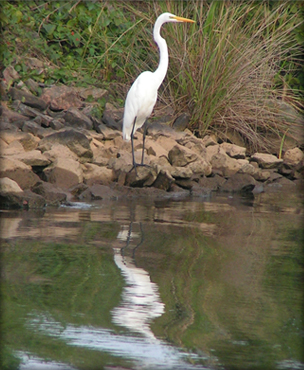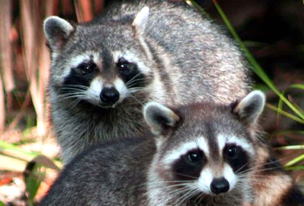Birds
The Augusta Canal is a haven and habitat for numerous species of year-round and migrating birds. Walk along the Augusta Canal's trails and watch and listen for migrating birds as they make their way to and from summer feeding and nesting grounds. Birding habitat includes the Augusta Canal waterway, the Savannah River and man-made wetlands and patches of bottomland hardwood forest.
A variety of fishing birds are common here including the wood duck, mallard and pie-billed grebe. Several types of heron and egret can be seen, along with cormorant, anhinga and the belted kingfisher.
Red-tailed and red-shouldered, and Cooper’s hawks seek their prey on and near the Canal, as do owls and vultures. There have even been rare sightings for bald eagles and osprey.
Check the Augusta Canal calendar of events for group bird watching outings that are occasionally scheduled.
Fish
Common species include Bluegill, Striped and Largemouth Bass, Carp, Crappie, Catfish, Gar and Sunfish.
A valid Georgia fishing license is required. All Georgia Department of Natural Resources fishing regulations apply to the Canal. DNR rangers make regular spot checks.
Reptiles
Turtles basking in the sun, lolling atop fallen logs a common and beloved sight on the Canal. The Yellow-bellied Slider turtle is so common here that we’ve named the official mascot of the Augusta Canal. Other turtles such as the River Cooter, Snapping Turtle, Mud Turtle, and the Stinkpot make their home near the Canal. Water snakes inclidng banded water snake and the venomous Cotton Mouth or Water Moccasin, and even the occasional alligator can be found at the Canal at certain times of the year.
Mammals
Watch the water and you may spy a playful river otter or muskrat swimming along. The wooded wetlands are home to small mammals such as Opossum, Racoon, Gray Squirrel and Cotton trail rabbit. Larger mammals, including the whitetail deer and, rarely, a wild hog may be seen. Predators include the red fox and, more recently, the coyote.
Trees and Plants
The Augusta Canal and its towpath harbor a diversity of native and non-native plant species. Towering Longleaf and Loblolly pine trees and well as deciduous trees such as the American Sycamore, Yellow Poplar and Water Oak line portions of the trails. The Flowering Dogwood is easy to spot in its spring attire of white bracts or autumn cloak of red leaves.
As the season change an array of wildflowers show their colors - from the delicate Virgin's Bower to the brilliant Cardinal Flower. Some plants, though lovely to look at, are considered invasive species; amoung them the Bradford Pear tree, Mimosa bush and the purple-blossomed Water Hyacinth.





